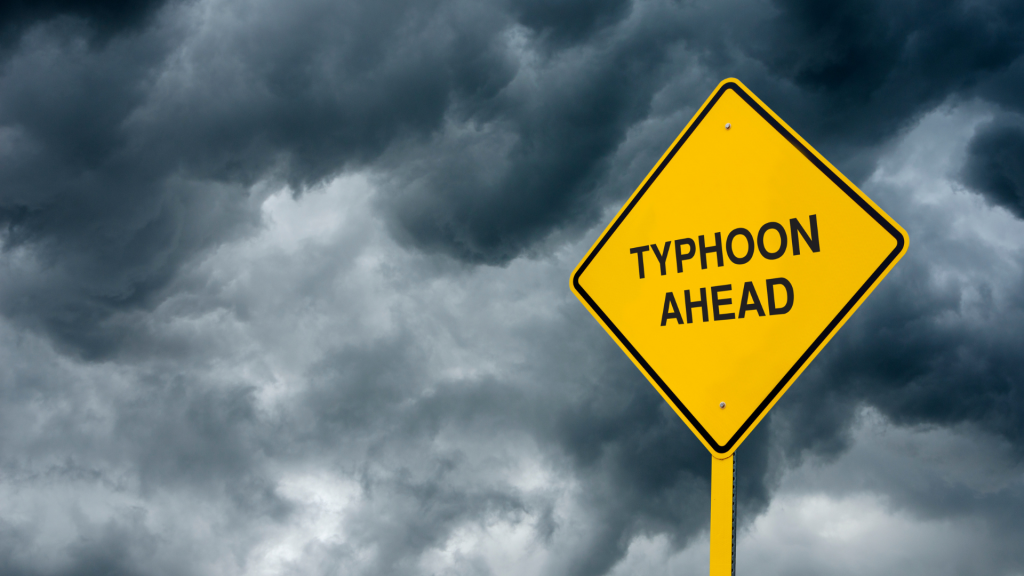
What To Know About Typhoons
Typhoons are one of the most powerful and unpredictable natural forces that we can face. Hurricanes, on the other hand, are a specific kind of typhoon. With no warning, they suddenly appear and devastate coastal areas and islands within hours. Find out what to know about them in this article!
What is a Typhoon?
A Typhoon is a type of tropical cyclone that forms in the western and central Pacific Ocean. They are typically named after the region from which they developed, such as Gordon or Sarah.
Typhoons can be very dangerous, producing powerful winds, rain, and storm surge. They are the most intense type of tropical cyclone, with winds reaching as high as 185 mph. They can cause extensive damage, particularly in coastal areas.
In 2013, Typhoon Haiyan (originally known as Yolanda) was one of the deadliest typhoons in history, killing more than 6,000 people in the Philippines.
Typhoon vs. Hurricane: What’s the Difference?
A typhoon is a type of hurricane that is made up of thunderstorms and has a diameter of about 100 miles. A hurricane, on the other hand, is a much larger storm with winds reaching speeds up to 175 mph.
A typhoon can form from an area of warm water and wind shear near the equator. These storms tend to travel in a westerly direction and are often followed by devastating rains, flooding, and landslides. Before a typhoon, it’s important to prepare your home to ensure the damage is limited. Smart Florida Gutters or similar companies near you can help you prepare by cleaning your gutters and fitting gutter guards, whilst you should also find a company to fit shutters on your windows. Typhoons are responsible for about 20 percent of all deaths from hurricanes worldwide.
Hurricanes originate from areas of low pressure in the atmosphere. They form when air flows over warm ocean waters and rises, eventually condensing into clouds and rain. Hurricanes require both moisture (rain) and wind to develop into a full-blown storm system, so they can happen anywhere in the world at any time.
While both typhoons and hurricanes are dangerous, there are some key differences that should be taken into account if you’re in the path of either storm. Typhoons typically travel much slower than hurricanes, so they may not cause as much damage. Additionally, typhoons are more likely to turn in a direction other than westward, meaning they may bypass an area entirely.
While a hurricane is still capable of causing serious damage when it makes landfall, it is also likely to cause more death and destruction due to its high winds. The high winds associated with hurricanes can result in significant roof damage to homes and buildings, leaving them vulnerable to further destruction. In such situations, it is crucial to have a reliable roofer (such as this Roofing contractor in Rockwall, TX) to assess the roof and reinforce it. Being prepared for any type of hurricane or typhoon includes proactively ensuring the integrity of your roof, so you can better protect your home and assets during natural disasters.
Not only is being prepared essential, but clean-up is also a priority because leaving it can cause further issues. if you have trees in your front or backyard and they are hit by the storm, even if they are only slightly broken, there is a chance that they could fully break and take down powerlines if left alone. This is why calling up tree services Greensboro, or local services surrounding your area, is highly important as they will be able to sort it out for you as quickly as possible, minimizing potential damage.
Once again, if you haven’t already reinforced your roof before a storm, you’d want to have a Roofing contractor in Brooklyn Park, MN look at it, if that’s where you’re at. Apart from the obvious damage that can be caused due to trees falling off the roof, the walls and ceilings may trap water, which can damage the house further, and result in mould growth.
What is the Typhoon Alert System?
The Typhoon Alert System (TAS) is an alert system used by the Japan Meteorological Agency to warn the public about potential typhoons in the East China Sea. The TAS is based on a two-level warning system: a yellow alert means that a typhoon is likely, while a red alert means that a typhoon is imminent. The TAS was first implemented in 2006 and has since been improved multiple times.
The TAS is based on two criteria: 1) the presence of a distinct low-pressure area, and 2) the intensity of winds. If either criterion is met, the JMA will issue a warning for residents in the area to take precautions. The system is primarily used for residents in the coastal areas of Japan but has been expanded to include residents in Taiwan and South Korea as well.
What is the Typhoon Scale?
The Typhoon Scale is a system used to classify typhoons. The scale goes from 1 to 10, with 10 being the most severe. A typhoon that is rated a level 5 on the scale is considered a very strong typhoon. A level 6 typhoon is considered a very intense typhoon. Level 7 and 8 typhoons are considered moderate strength, while level 9 and 10 are considered severe typhoons.
The scale was developed in the 1970s by the Japanese Meteorological Agency (JMA). The agency uses a six-level system to rate tropical cyclones. Level one storms have wind speeds of less than 39 km/h (24 mph). Level two storms have wind speeds of 39 – 61 km/h (24 – 37 mph). Level three storms have wind speeds of 62 – 119 km/h (38 – 74 mph). Level four storms have wind speeds of 120 – 159 km/h (75 – 99 mph). Level five storms have wind speeds of 160 km/h or more (100 mph or more).
Typhoons are typically named after animals, plants, Chinese characters, or places in Asia. For example, Typhoon Haiyan was named after the Yap Island palm tree and Haiyan Island in the Philippines.
How Do You Keep Safe During a Typhoon?
There are some simple things you can do to make sure you stay safe during a typhoon. Here are four tips:
- Stay informed. Stay up-to-date on the latest weather updates and plan your route accordingly.
- Know your evacuation routes. Know where to go if you have to evacuate and what supplies you’ll need.
- Keep an emergency kit stocked with food, water, first aid supplies, and tools for repairs or sheltering in place.
- Bundle up! Wear layers of clothing, bring a raincoat and sturdy shoes, and avoid walking in floodwaters or standing in wind gusts. If you are in the path of a typhoon, follow the instructions of local officials.
Typhoons are one of the most dangerous weather phenomena to be aware of, and if you’re in its path it’s important to take precautions. Make sure to follow all warnings from local officials and stay safe!



